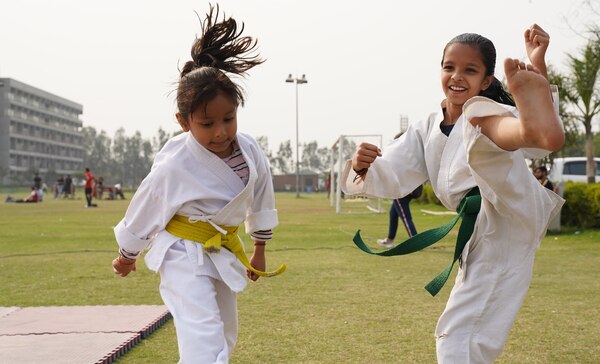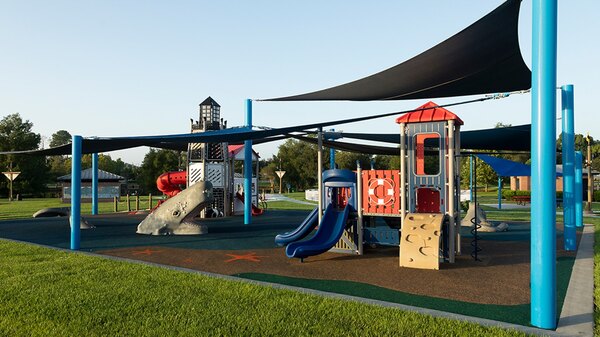Top 6 Sports for Kids to Play and Their Benefits
Sports are not just a source of physical activity; they are also a fantastic way for children to develop essential life skills, make friends, and have a blast. But with so many options out there, how do you decide which sport is right for your child? Join us as we explore the top 6 sports for kids to play and the incredible benefits they offer.
From teamwork to physical fitness, these sports also have unforeseen benefits, such as building resilience against challenging life situations, such as bullying.
Soccer: The Global Game
Also known as football in most parts of the world, soccer is the king of sports when it comes to global popularity. It’s a fantastic activity for kids because it encourages teamwork, coordination, and endurance. Kids learn to work together to achieve a common goal: scoring goals. It’s also an excellent way to boost cardiovascular health, as players run up and down the field throughout the game.
Soccer helps develop dexterity. Soccer is more than just a game; it’s a social event that connects people across the globe. Children not only bond with their teammates but also make friends with players from other teams. This global connection fosters a sense of unity and broadens their horizons.
Golf: A Sport for the Mind and Body
Golf may not seem like an obvious choice for kids, but it offers several benefits that make it a great option. It requires focus, concentration, and patience, to help kids develop valuable mental skills. The physical aspect of golf is also important; it promotes steadiness and muscle strength. With different clubs for different shots, golf allows kids to use their creativity and problem-solving skills.
It’s also a sport that teaches etiquette and sportsmanship, as players must adhere to rules and show respect for other players on the course. You can also easily find all the useful information on golf equipment and how to get started in this sport at Golf Insider UK and similar trusted online sources. So, if your child is interested in golf, don’t hesitate to give it a try.
Basketball: Shoot for the Stars
This high-energy sport will keep kids on their toes. It promotes physical fitness, focusing on speed, agility, and hand-eye coordination. Dribbling and shooting hoops require precision while playing defense improves strategic thinking.
Basketball is also a fantastic sport for building self-esteem. Scoring a basket is a moment of pure triumph, and even missed shots teach valuable lessons in perseverance. The fast pace of basketball makes it an ideal sport for kids with boundless energy, and they can dribble basketball at home without disturbing the whole family with silent dribble basketballs.
Martial Arts: Discipline and Respect
Martial arts, such as karate, judo, BJJ, or taekwondo, are excellent for teaching kids self-discipline, respect, and self-defense. While it might not seem like a traditional team sport, it’s still very much about collaboration and respect for fellow practitioners. Kids martial arts classes emphasize goal setting and personal development.
It’s a fantastic choice for building confidence and self-control. Martial arts are not just about physical prowess; they’re about mental and emotional growth. Kids learn to channel their energy positively, control their emotions, and respect their instructors and peers.
Swimming: Dive into Excellence
Swimming is a life skill, a sport, and a fun activity rolled into one. It’s a common family activity in many settings. It’s ideal for kids because it promotes total-body fitness, and flexibility. Plus, it’s an essential safety skill. Whether your child swims competitively or just for fun, they will develop strong cardiovascular stamina and muscular strength.
The water’s buoyancy is easy on young joints, making it a low-impact sport. This is an excellent option for kids who may have physical limitations. Beyond fitness, swimming is a sport that promotes water safety. Kids who learn to swim gain confidence in the water, which is crucial for their safety. It’s a life skill that can potentially save lives.
Gymnastics: Balance and Grace
Gymnastics is a wonderful choice for kids who want to explore their physical capabilities and improve their flexibility. It helps them develop balance and strength. In addition to physical benefits, gymnastics teaches discipline and perseverance. Young gymnasts learn to set goals and work tirelessly to achieve them. To get started safely, the right setup matters—this overview of basic gymnastics equipment covers essential mats, beams, bars, vaults, and safety gear, plus care tips for home practice, school programs, or beginner classes. It’s a sport that celebrates individual achievements, making it perfect for kids who thrive on personal challenges.
The artistry of gymnastics offers children a unique form of self-expression. Whether they’re gracefully gliding on the balance beam or showing power in their floor routine, it allows them to showcase their individuality.

In conclusion, sports offer an incredible array of physical, mental, and social benefits for kids. So, whether your child is a future soccer star, a budding basketball legend, or an aspiring gymnast, there’s a sport that can help them grow, thrive, and have a ton of fun.
Encourage them to explore, try new things, and see where their passion lies. After all, the goal is not just winning but ensuring that they enjoy every moment of their journey through the world of sports. Remember, it’s about the joy of playing and the valuable life lessons learned along the way.












